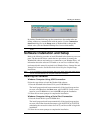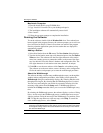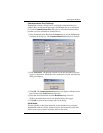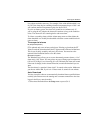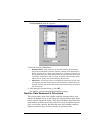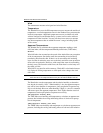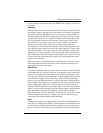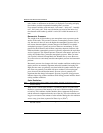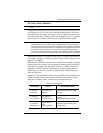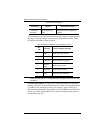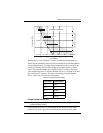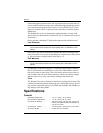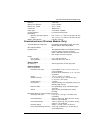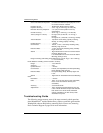
Weather Data Measured & Calculated
19
on our perception of the temperature.The THSW Index requires a solar radia-
tion sensor.
Humidity
Humidity itself simply refers to the amount of water vapor in the air. However,
the amount of water vapor that the air can contain varies with air temperature
and pressure. Relative humidity takes into account these factors and offers a
humidity reading which reflects the amount of water vapor in the air as a per-
centage of the amount the air is capable of holding. Relative humidity, there-
fore, is not actually a measure of the amount of water vapor in the air, but a
ratio of the air’s water vapor content to its capacity. When we use the term
humidity in the manual and on the screen, we mean relative humidity.
It is important to realize that relative humidity changes with temperature, pres-
sure, and water vapor content. A parcel of air with a capacity for 10 g of water
vapor which contains 4 g of water vapor, the relative humidity would be 40%.
Adding 2 g more water vapor (for a total of 6 g) would change the humidity to
60%. If that same parcel of air is then warmed so that it has a capacity for 20 g
of water vapor, the relative humidity drops to 30% even though water vapor
content does not change.
Relative humidity is an important factor in determining the amount of evapo-
ration from plants and wet surfaces since warm air with low humidity has a
large capacity for extra water vapor.
Dew-Point
Dew-point is the temperature to which air must be cooled for saturation 100%
relative humidity) to occur, providing there is no change in water content. The
dew-point is an important measurement used to predict the formation of dew,
frost, and fog. If dew-point and temperature are close together in the late after-
noon when the air begins to turn colder, fog is likely during the night. Dew-
point is also a good indicator of the air’s actual water vapor content, unlike rel-
ative humidity, which takes the air’s temperature into account. High dew-point
indicates high vapor content; low dew-point indicates low vapor content. In
addition a high dew-point indicates a better chance of rain and severe thunder-
storms. You can even use dew-point to predict the minimum overnight temper-
ature. Provided no new fronts are expected overnight and the afternoon
Relative Humidity ≥ 50%, the afternoon’s dew-point gives you an idea of what
minimum temperature to expect overnight, since the air is not likely to get
colder than the dew-point anytime during the night.
Rain
Vantage Pro2 incorporates a tipping-bucket rain collector in the ISS that mea-
sures 0.01'' for each tip of the bucket. A metric adapter can be installed to mea-
sure 0.2 mm for each tip of the bucket.Your station logs rain data in the same
units it is measured in and converts the logged totals into the selected display



